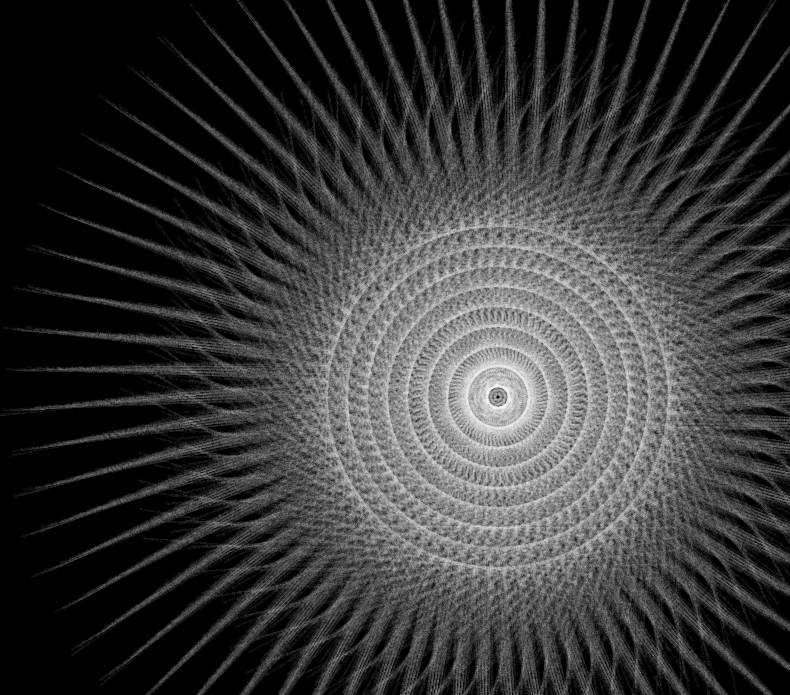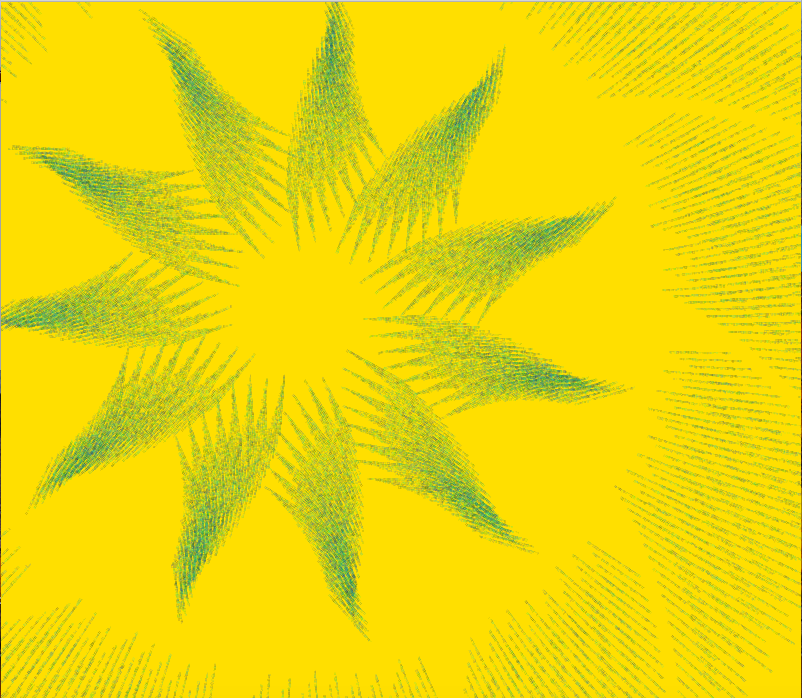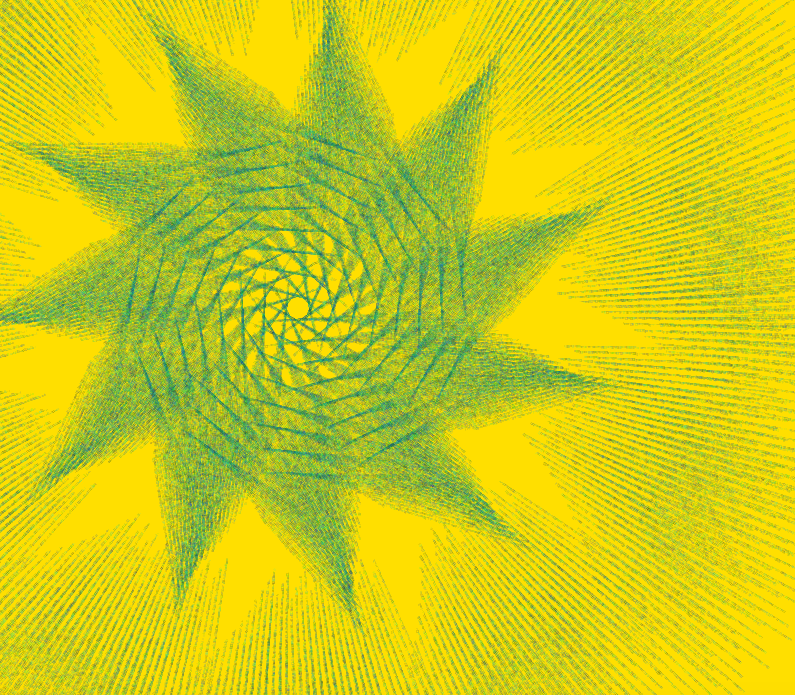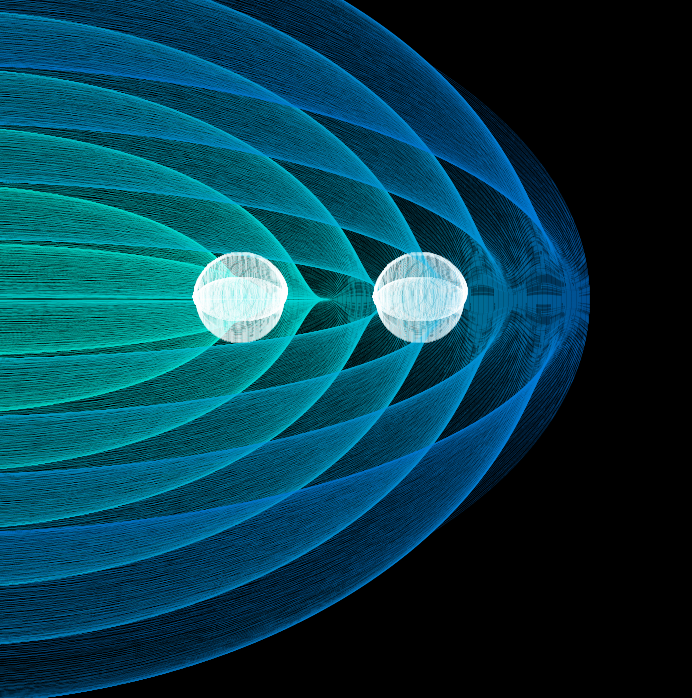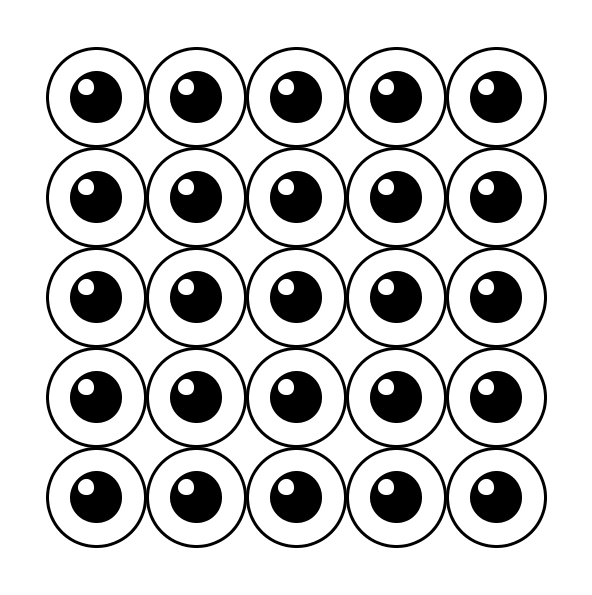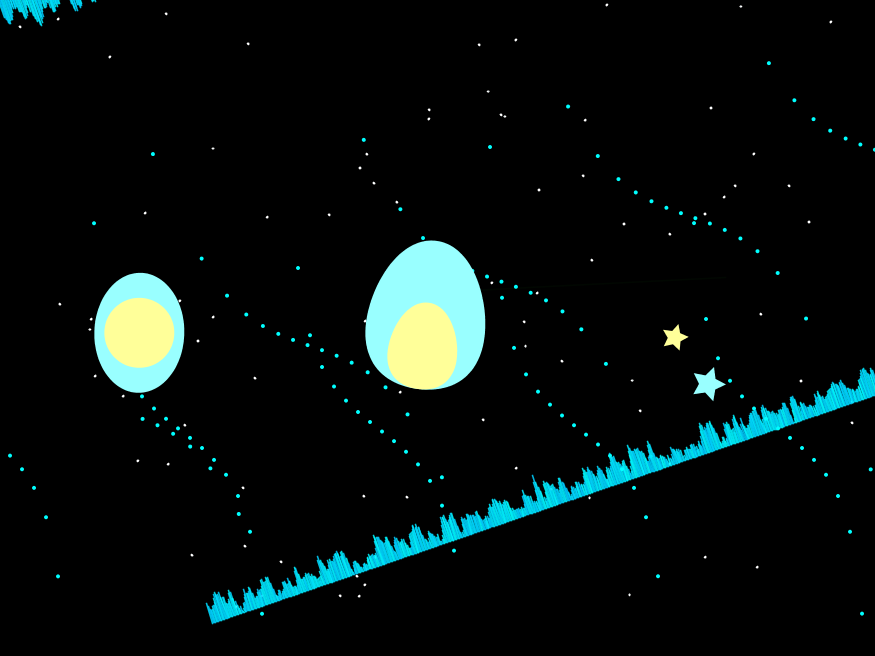Grace Hertlein, as the front-runner of the second wave of programmatic artists, was as impactful as, if not more than the front-running pioneers such as Nees and Molnar.
In a sense, she brought more aliveness into the computer art world. By efforting to re-create nature, she arguably made programming art more comprehensible, more accessible and more appealing to the newcomers.
Hertlein didn’t follow a strict heuristic or formality, instead she was moderately pushing against the precision of computer, and highlighted inexactness and disorder in her works.
I have to confess that in my Hertlein pieces I didn’t have a target natural phenomenon or pattern in mind to model after. Originally I wanted to try my hand at simulating a spaceship-view of Tsunami and Hurricane against the earth’s curved landscape. The attempt did not lead to any fruitfulness, unfortunately.
My first piece was intended to be a conceptual whirlpool. It quickly started to resemble an emitting star – with the brightest most energized spot in the center, which shot out shock waves into the surrounding universe. If I let it develop for a little while longer, the sketch would grow calmer, and would eventually transmute into the ‘Thousand-hand Bodhisattva”.
I experimented with blending in some colorfulness, but realized that colors took away the subtlety of the transformation. The white stroke against black canvas let the viewer focus on the particle movements without much distraction.
My second sketch was a twist of the first sketch. This time I reversed the formation process. Whereas in the first piece the light was emanating outwards, in the second one energy was flowing in from outside the canvas, as if into a spinning gravitational field. As the dust particles approached the center, they didn’t swirl around in a predictable circular track – instead they formed fragmented polygons. It was like the organic ‘fading’ into the concrete, the soft ‘easing’ into the hard.
My third piece was the most fun to make. I played with shells, which we practiced in one of the check-ins. By adjusting a few parameters, I made the shell resemble the structure of an eye ball, with a touch of 3-dimensional feel. I lined up two shells of identical size in preparation to make a facial pattern. This attempt at imitation was again not the most satisfying. Quite luckily, with pure chance I discovered an abnormal shell that looked like the two ends of an advancing wave. I applied two changing parameters on the Rgb scale simultaneously, which yielded to the gradual color transfiguration I desired. This sketch was abstract yet organic. It didn’t look like an exact replica of any particular natural phenomenons, but maybe this very fact rendered part of the beauty.
All in all, Hertlein encouraged the practice of ’sketching’, favoring playfulness over profoundness. It goes without saying that the word ’sketch’ feels intimate to my fellow classmates and I. Personally speaking, one of the most fun aspects of the ‘Art from Code’ class is the non-stop opportunity to tinker. The moment of hitting ‘run’ creates a mini high filled with anticipation, which may lead to pleasant surprise, subtle disappointment, or flat-out big sense of achievement. ’Sketching’ is what makes Sketch’ delightful.
